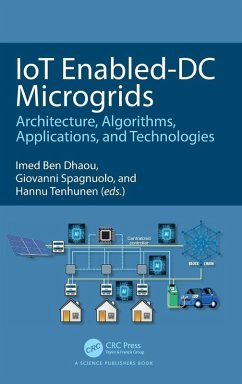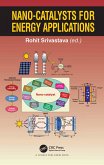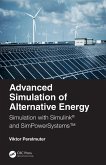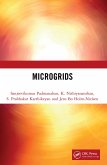Iot Enabled-DC Microgrids
Architecture, Algorithms, Applications, and Technologies
Herausgeber: Ben Dhaou, Imed; Tenhunen, Hannu; Spagnuolo, Giovanni
Iot Enabled-DC Microgrids
Architecture, Algorithms, Applications, and Technologies
Herausgeber: Ben Dhaou, Imed; Tenhunen, Hannu; Spagnuolo, Giovanni
- Gebundenes Buch
- Merkliste
- Auf die Merkliste
- Bewerten Bewerten
- Teilen
- Produkt teilen
- Produkterinnerung
- Produkterinnerung
Smart-grid is the new generation of the power gird that has been advocated to increase the reliability of the grid and to reduce carbon footprint by integrating distributed resources. Microgrid technology allows for the integration of renewables energies. Microgrids are either AC or DC.
Andere Kunden interessierten sich auch für
![Power System Scada and Smart Grids Power System Scada and Smart Grids]() Mini S ThomasPower System Scada and Smart Grids139,99 €
Mini S ThomasPower System Scada and Smart Grids139,99 €![Coating Application for Piping, Valves and Actuators in Offshore Oil and Gas Industry Coating Application for Piping, Valves and Actuators in Offshore Oil and Gas Industry]() Karan SotoodehCoating Application for Piping, Valves and Actuators in Offshore Oil and Gas Industry140,99 €
Karan SotoodehCoating Application for Piping, Valves and Actuators in Offshore Oil and Gas Industry140,99 €![Electric Utility Resource Planning Electric Utility Resource Planning]() Steven SimElectric Utility Resource Planning123,99 €
Steven SimElectric Utility Resource Planning123,99 €![Nano-Catalysts for Energy Applications Nano-Catalysts for Energy Applications]() Nano-Catalysts for Energy Applications165,99 €
Nano-Catalysts for Energy Applications165,99 €![Technological Advancement in Clean Energy Production Technological Advancement in Clean Energy Production]() Technological Advancement in Clean Energy Production198,99 €
Technological Advancement in Clean Energy Production198,99 €![Advanced Simulation of Alternative Energy Advanced Simulation of Alternative Energy]() Viktor M PerelmuterAdvanced Simulation of Alternative Energy160,99 €
Viktor M PerelmuterAdvanced Simulation of Alternative Energy160,99 €![Microgrids Microgrids]() Sanjeevikumar PadmanabanMicrogrids48,99 €
Sanjeevikumar PadmanabanMicrogrids48,99 €-
-
-
Smart-grid is the new generation of the power gird that has been advocated to increase the reliability of the grid and to reduce carbon footprint by integrating distributed resources. Microgrid technology allows for the integration of renewables energies. Microgrids are either AC or DC.
Hinweis: Dieser Artikel kann nur an eine deutsche Lieferadresse ausgeliefert werden.
Hinweis: Dieser Artikel kann nur an eine deutsche Lieferadresse ausgeliefert werden.
Produktdetails
- Produktdetails
- Verlag: CRC Press
- Seitenzahl: 272
- Erscheinungstermin: 22. November 2024
- Englisch
- Abmessung: 234mm x 156mm x 18mm
- Gewicht: 572g
- ISBN-13: 9781032594118
- ISBN-10: 103259411X
- Artikelnr.: 70974692
- Herstellerkennzeichnung
- Libri GmbH
- Europaallee 1
- 36244 Bad Hersfeld
- gpsr@libri.de
- Verlag: CRC Press
- Seitenzahl: 272
- Erscheinungstermin: 22. November 2024
- Englisch
- Abmessung: 234mm x 156mm x 18mm
- Gewicht: 572g
- ISBN-13: 9781032594118
- ISBN-10: 103259411X
- Artikelnr.: 70974692
- Herstellerkennzeichnung
- Libri GmbH
- Europaallee 1
- 36244 Bad Hersfeld
- gpsr@libri.de
Imed Ben Dhaou received the Ph.D. degree from Royal Institute of Technology in 2002. He is currently a Full professor in embedded systems at the Department of Computer Science, Dar Al-Hekma University and adjunct professor in Embedded Systems for IoT at the department of computing, University of Turku. He has authored and co-authored over 120 journal and conference papers, and received numerous awards, including the Best Paper Award from the 1997 Finnish Symposium on Signal Processing, travel grants from the Ph.D. Forum at DAC, Los Angeles in 2000, a publication award from Qassim University, and the Dr. Hussein Mohammed Al-Sayyed award for research. Since September 2014, Dr. Ben Dhaou has served as an editor to the Microelectronics Journal, Elsevier, and was the Guest Editor for over five four special issues in ISI journals. He has also served as TPC chair or TPC member for several conferences in his primary fields of expertise. He has held several managerial positions including director of a private university, consultant to the deanship for graduate studies at Qassim university coordinator of the scientific research committee at Unaizah college of engineering, coordinator of the center of excellence in teaching and learning at Dar Al-Hekma university, and secretary of the scientific council at Dar Al-Hekma university. Giovanni Spagnuolo is Full Professor of Electrical Engineering at the University of Salerno, Italy, and Fellow of the IEEE. He was included in the 2015 list of Most Influential Minds published by Thomson Reuters. He is the Coordinator of the Italian PhD program "Photovoltaics". He is Member of the Advisory Board of the IEEE Journal of Photovoltaics, Associate Editor of the IEEE Open Journal of the IES and of the IEEE Industrial Electronics Magazine. Hannu Tenhunen received the Diploma Engineer degree in electrical engineering and computer sciences from Helsinki University of Technology, Helsinki, Finland, in 1982 and PhD degree in microelectronics from Cornell University, Ithaca, NY, in 1986. During 1978-1982, he was with Electron Physics Laboratory, Helsinki University of Technology. From 1983 to 1985, he was with Cornell University as a Fulbright Scholar. From September 1985, he was with the Signal Processing Laboratory, Tampere University of Technology, Finland, as an Associate Professor and head of department. He was also a Coordinator of the National Microelectronics Program of Finland during 1987-1991. Since January 1992, he has been with Royal Institute of Technology (KTH), Sweden, where he is a Chair Professor in the electronic system design. At KTH he was the dean of School of Information Technology 2002-2005. For period 2006-2011 he was director of Turku Centre of Computer Science (TUCS), Finland. He has been a part time invited professor at University of Turku. He has an honorary doctorate and honorary professor degrees and has received a Magnolia Silver Award and Metal from the city of Shanghai for his contributions there. His current research interests are VLSI circuits and systems for autonomic and smart systems and IoT. He has been actively involved in several EU programs on VLSI/ system-on-a-chip. He was, at European level, the education director of the European Institute of Innovation and Technology, EIT Digital, 2006-2011. He has published over 950 reviewed publications and holds 9 international patents. His google scholar number of citations is 15116 and h-index is 53.
PART 1: FUNDAMENTALS AND TECHNOLOGIES. Architectures and Technologies for
DC Microgrid. Internet-of-Things-Based Communication in Microgrids.
Blockchain Technology for DC Microgrids. Digital Twin Framework for
Monitoring, Controlling and Diagnosis of Photovoltaic DC Microgrids. From
Microgrids to Virtual Power Plants: A Cybersecurity Perspective. An
Overview of Artificial Intelligence Driven Li-Ion Battery State Estimation.
Addressing Societal Challenges and Enhancing Academic Effectiveness through
Challenge-Driven Education: A Case Study in Smart Microgrid. PART 2: DESIGN
AND OPTIMIZATION. Development and Evolution of Hybrid Microgrids in the
Context of Contemporary Applications. Formal Methods for Microgrids. Direct
Current Microgrids: A Business Model Perspective. Index.
DC Microgrid. Internet-of-Things-Based Communication in Microgrids.
Blockchain Technology for DC Microgrids. Digital Twin Framework for
Monitoring, Controlling and Diagnosis of Photovoltaic DC Microgrids. From
Microgrids to Virtual Power Plants: A Cybersecurity Perspective. An
Overview of Artificial Intelligence Driven Li-Ion Battery State Estimation.
Addressing Societal Challenges and Enhancing Academic Effectiveness through
Challenge-Driven Education: A Case Study in Smart Microgrid. PART 2: DESIGN
AND OPTIMIZATION. Development and Evolution of Hybrid Microgrids in the
Context of Contemporary Applications. Formal Methods for Microgrids. Direct
Current Microgrids: A Business Model Perspective. Index.
PART 1: FUNDAMENTALS AND TECHNOLOGIES. Architectures and Technologies for
DC Microgrid. Internet-of-Things-Based Communication in Microgrids.
Blockchain Technology for DC Microgrids. Digital Twin Framework for
Monitoring, Controlling and Diagnosis of Photovoltaic DC Microgrids. From
Microgrids to Virtual Power Plants: A Cybersecurity Perspective. An
Overview of Artificial Intelligence Driven Li-Ion Battery State Estimation.
Addressing Societal Challenges and Enhancing Academic Effectiveness through
Challenge-Driven Education: A Case Study in Smart Microgrid. PART 2: DESIGN
AND OPTIMIZATION. Development and Evolution of Hybrid Microgrids in the
Context of Contemporary Applications. Formal Methods for Microgrids. Direct
Current Microgrids: A Business Model Perspective. Index.
DC Microgrid. Internet-of-Things-Based Communication in Microgrids.
Blockchain Technology for DC Microgrids. Digital Twin Framework for
Monitoring, Controlling and Diagnosis of Photovoltaic DC Microgrids. From
Microgrids to Virtual Power Plants: A Cybersecurity Perspective. An
Overview of Artificial Intelligence Driven Li-Ion Battery State Estimation.
Addressing Societal Challenges and Enhancing Academic Effectiveness through
Challenge-Driven Education: A Case Study in Smart Microgrid. PART 2: DESIGN
AND OPTIMIZATION. Development and Evolution of Hybrid Microgrids in the
Context of Contemporary Applications. Formal Methods for Microgrids. Direct
Current Microgrids: A Business Model Perspective. Index.

